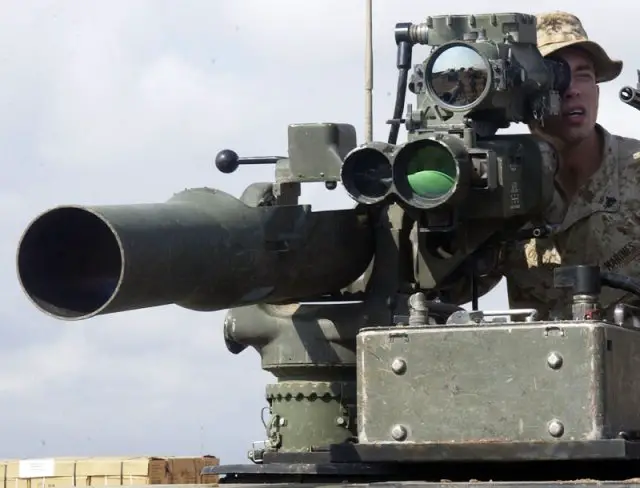Breaking news
Raytheon introduces its new TOW EagleFire launcher 23010151.
|
|
|||
|
Defence & Security Inustry News - Raytheon
|
|||
|
|
|||
| Raytheon introduces its new TOW EagleFire launcher | |||
|
Raytheon Company has introduced its TOW EagleFire launcher, an evolutionary development designed to bridge the capabilities of existing launchers and eliminate obsolescence issues. Designed to fire both the wire-guided and wireless radio frequency missiles, TOW EagleFire provides increased capabilities over the TOW 2 launcher at a lower cost.
|
|||
|
|
|||
 Raytheon's new EagleFire launcher highly improves capabilities of the TOW 2 launcher Raytheon's new EagleFire launcher highly improves capabilities of the TOW 2 launcher |
|||
|
|
|||
|
"We improved target acquisition and engagement found in the older TOW 2 launcher system," said Duane Gooden, vice president of Raytheon's Land Warfare Systems. "TOW EagleFire is simpler to maintain and more reliable, thanks to built-in test equipment and a significant reduction in system subassemblies."
"Because the new system is less complex, we can provide superior performance in a reduced package," said Gooden. "By planning today for tomorrow's upgrades, TOW EagleFire will accommodate future missile evolution." The tube-launched, optically-tracked, wireless-guided (TOW) weapon system, with the multimission TOW 2A, TOW 2B Aero and TOW Bunker Buster missiles, is the premier long-range, precision, anti-armor, anti-fortification weapon system used throughout the world today. TOW is in service in more than 40 international armed forces and integrated on more than 15,000 ground, vehicle and helicopter platforms worldwide. Raytheon has delivered more than 690,000 TOW missiles to U.S. and allied warfighters. The TOW weapon system will be in service with the U.S. military beyond 2025. |
|||




























